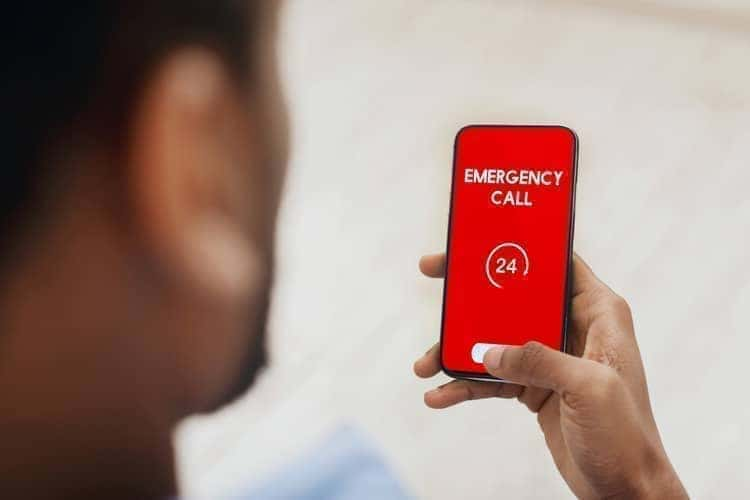The Critical Role of Ambulances in Emergency Medical Services
Optimizing the golden hour, the first sixty minutes of a medical emergency is the most important part of emergency response, and ambulance services play a crucial role in saving lives at the right time. Ambulance services staff several people like paramedics, doctors, and even drivers that coordinate together to provide immediate care to an injured or ill individual, and make sure they reach the hospital on time to receive advanced care. In this blog, we will look into the importance of a well-equipped ambulance and the essential ambulance equipment list.
Importance of Having a Well-equipped Ambulance
A well-equipped ambulance is necessary to provide timely and efficient care that other normal vehicles won’t be able to provide. Sure, a normal vehicle can get you to the hospital, but if there’s a need to provide medical treatment to the troubled person, you won’t be able to, and anyone who has been in a life-threatening emergency knows how important it is to provide treatment at the earliest. A well-equipped ambulance not only has the necessary equipment for providing treatment during emergencies, but it also has good GPS navigation systems installed that can get the ambulance to the hospital using the fastest route, thus saving more time.
What is a non-emergency ambulance service?
Non-emergency ambulance services are used by people who need safe transport while also requiring medical attention. These people don’t need immediate medical attention or emergency care but surely do require secure transport, and non-emergency ambulances serve this purpose. Instances include; patients or elderly who require transfer from one hospital to another, people having mobility issues or special needs, and hospital discharges.
Essential Equipment in a Non-emergency Ambulance Service
Basics in a non-emergency ambulance equipment list include:
First Aid Box or Ambulance Bag
The first one in the ambulance equipment list is a first aid box or an ambulance bag. A first aid kit contains all the necessary equipment and supplies for small injuries or basic illnesses. An ambulance bag is also similar to a first aid kit but it contains a lot more medical supplies as compared to a first aid kit. It is also called a trauma bag. An ambulance bag in the ambulance equipment list is essential as it contains all the necessary equipment for basic medical care and monitoring.
Instruments for Measuring Vital Signs
An ambulance equipment list is incomplete without having instruments for measuring a person’s vital signs like a blood pressure monitor, pulse oximeter, stethoscope, thermometer, etc. This equipment helps in monitoring vital signs such as temperature, pulse rate, and respiratory rate. All of these instruments in the ambulance equipment list help in determining the status of the patient and help in providing the necessary care.
CPR Mask
Next on the ambulance equipment list is a CPR mask. It is a pocket mask with a one-way valve that is used to supply rescue breaths during the lifesaving CPR procedure. It is a protective mask as it can be used to provide lifesaving breaths while keeping the emergency responder safe from the sick person’s bodily contaminants.
Detachable Drip Stand
A detachable drip helps in administering IV therapy during transport. It is necessary in this ambulance equipment list as it is mobile and versatile and can easily fit in the limited ambulance space.
Essential Ambulance Equipment list
The essential devices in the 108 ambulance equipment list are:
Patient Monitor
A multipara patient monitor is essential in the 108 ambulance equipment list. It tracks, measures, and displays multiple vital signs of a patient. This device is important as it provides real-time data about the patient’s health which can then help the paramedics take the necessary action for treatment.
Defibrillator
This device in the BLS ambulance equipment list restores heart rhythm to a normal pace by controlled electric shocks. An automated external defibrillator is user-friendly devices that help in administering shocks during a sudden cardiac arrest.
Suction Unit
A suction unit in the 108 ambulance is a respiratory support device that helps in sucking out any obstruction in the patient’s respiratory airway or helping remove fluids that pressurize sensitive internal organs. This device is essential for efficient airway management.
Oxygen Supply Units
This device is basic in the BLS ambulance equipment list as it provides adequate oxygen and, controlled and continuous supply to those in need of this support.
Spine Board or Scoop Stretcher, Wheel Chair
These devices in the 108 ambulance equipment list help in patient handling, that is, a spine board or scoop stretcher helps in carrying an injured person with stability so that the patient’s injury is not worsened. A spine board also has a head immobilizer, as the name suggests it helps in keeping the head in position and avoiding any further injury. A wheelchair also helps in transporting patients with ease.
All of these essentials in the BLS ambulance equipment list will help in stabilizing and saving lives in danger and ensuring that a patient receives the most important treatment and care during the crucial hour of the emergency.


